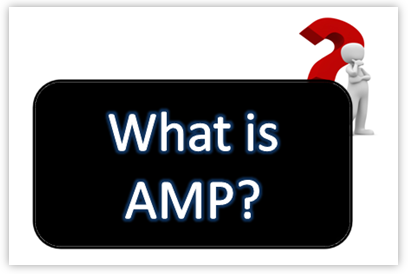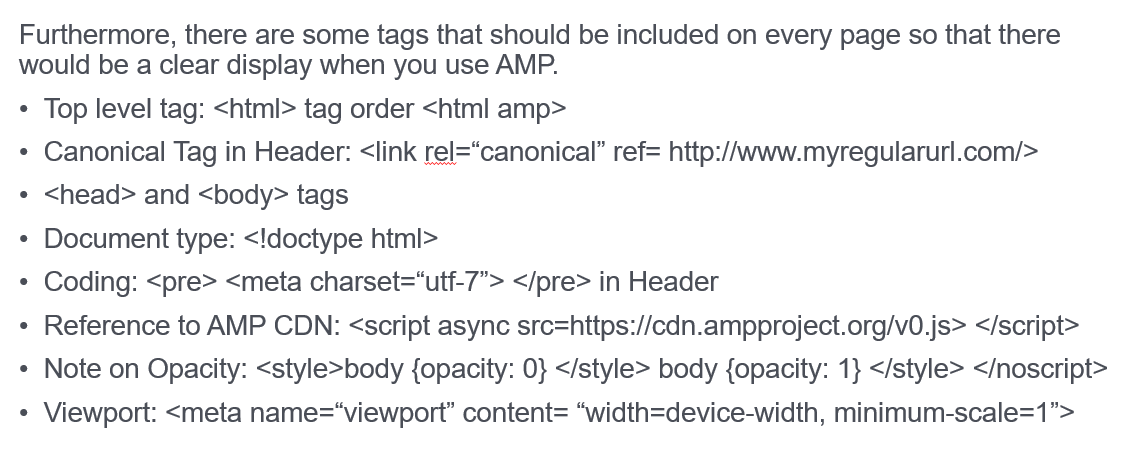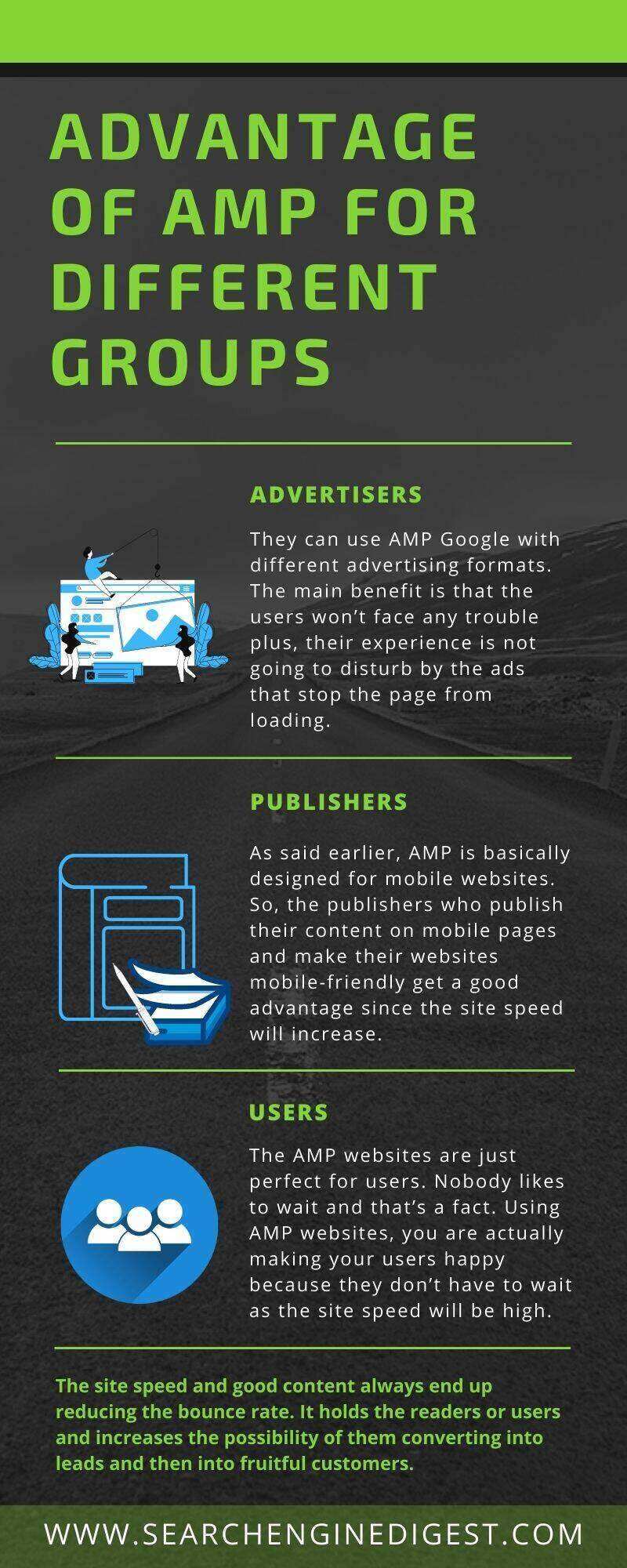Today the whole world is revolving around gadgets and we are gradually moving towards adopting mobile devices. They are portable and easier to handle as compared to laptops and computers. We are leaned towards using mobile handsets and tablets to find any information or to perform any online activity. So, do you think whether these curious people will wait enough if your web page takes time to load. I guess without a doubt, the answer would be no!
The load speed of your web page will decide whether you will gain or lose a customer. And not only that, it can also increase the conversion rate on a mobile website. If the site speed of your mobile website is more than 5 seconds then maybe your customer will move to the other one. Still, most of the websites miss the mark. Google itself states that the average loading speed is around 19 sec. Hence, to stand out in a competition, you can use AMP (accelerated mobile page), a practice involved in on-page SEO(search engine optimization) that will help you in optimizing the landing page of your mobile website.
Now, the question is, what AMP is? Well, reading this blog will clear all your doubts regarding the same. So, let’s get started.
What is AMP?

AMP is an acronym for “accelerated mobile page”. It is basically an open source project that is created by web developers to increase the performance and load speed of web pages for mobiles and tabs. With AMP, you can easily create mobile websites that load easily and instantly.
It basically consists compressed form of HTML copies from the existing webpage content. It loads much faster than standard HTML5 documents. Web developers implement rel=amphtml tag in the HTML code of a website to serve AMP website. The need of additional CSS request is reduced, plus it eliminates bulky pictures that result in increasing the speed greatly.
The history of AMP

In 2016, the “Accelerated Mobile Page Project” was launched by a group of companies comprising Google, WordPress, and the software giant Adobe. The project also involved some portals. Now, it was the time for the website owners or an SEO company to implement this on the web page. Some of the websites that employ this were The Guardian (UK), The Washington Post and Buzzfeed (USA), the Frankfurter Allgemeine Zeitung and Die Zeit (Germany), and El Pais (Spain). So far, Twitter and LinkedIn have also been involved in AMP. It became so common that today, almost all large online websites implement AMP technology. If you are a good SEO company then it must be used by you too so that your or your client’s websites load without any trouble.
There is a lot more to know about the history of AMP. Below I am providing you data that includes the timeline of important AMP related news over the past few years.
- 24th February 2016 – The launch date of accelerated mobile page by Google
- 20th September 2016 – Incorporation of AMP into search results by Google
- 21st August 2017 – The phase 2 of the AMP ads was completed
- 13th February 2018 – Introduction of AMP stories
- 7th December 2018 – Release date of official WordPress plugin
How AMP works?
The main reason for adding AMP to a website is to increase the loading speed of a mobile website. Moreover, it is basically designed for speed and by applying this, developers can easily avoid common coding issues that can affect the site’s speed and can make the page slow to load.
The good news is that Google AMP cache directly serves AMP pages. When possible, the cached copy of the landing page is served by Google, and that offers the fastest loading. In any case or due to any technical issue, if it is unable to serve from the cache, the landing page will load from the web server, and that would be much faster than a page that doesn’t contains AMP.
In the new Google ads experience, you can add the ideologies of AMP by creating AMPHTML ads. These ads can also be served on AMP and non-AMP pages. They provide high-speed and secure experiences across all the platforms.
How AMP is the solution of slow loading pages?

Loading of a page depends on internet connectivity and the speed of the connection. But, is that all? Well, no! It also depends on your content. It depends on the size of images, infographics, or maybe the data. You need to optimize each one if you want to hold the users. Still, even a technically optimize webpage can load slowly if the user’s connection is poor.
Well, AMP surely is not able to affect the capacity of an internet connection, but it can impact the load time as much as possible. Actually, it creates the best situation for a mobile website; so that it can load as fast as achievable, even when the internet connectivity is low. For this, it limits the number of JavaScript and CSS elements required. It ensures that at a particular time, only those resources should load that is vital for a page to view.
So, basically, what AMP does is that it reduces the files that have to be loaded. Another factor is the proxy server. It keeps ready a cache of the target page. Now, the transmission of content happens over a Content Delivery Network.
A small overview about AMP source code
Generally, AMP source code can be read by all the servers. The codes are based on well-known scripts. Below given are the main characteristics of AMP:-
- AMP HTML – The HTML code is limited to the essentials. Whenever the page is loaded, only one HTML request is sent.
- AMP JavaScript – The asynchronous JavaScript code is used in AMP. The advantage of so is that it allows the site to load before the entire JS element is loaded.
- AMP CDN – Using CDN (Content Delivery Network) the content is shown to the user by using the shortest path. One more advantage while using CDN is the continuous check of the functionality of the page. This constant checking helps to evade errors.
Changes you need to make to implement AMP
There are few changes that you need to do if you want to implement AMP. For this, you need to mark the audiovisual media content with special AMP tags like amp-img, amp-video, amp-audio, ampi-iframe, etc. For a clear view, let’s look at the following example. Below given is an idea of how to insert an image into the source code of a page using AMP.

Advantage of AMP for different groups

The AMP is launched so that everyone can benefit from it. Talking about site speed, it does affect the ranking of a website. If you want to make a website SEO friendly and maintain top SEO rank, you can apply different techniques like keyword research, link building, email marketing, social media marketing, and much more. Similarly, if you want to increase the page speed you should choose to introduce AMP to your mobile website. As meta description and creating meta tags affects the click-through rate of a website, the site speed and good content always end up reducing the bounce rate. It holds the readers or users and increases the possibility of them converting into leads and then into fruitful customers.
Now, the question is, how it can benefit you? AMP provides the benefit of different stakeholder groups like advertisers, publishers, and users.
Advertisers –
They can use AMP with different advertising formats. The main benefit is that the users won’t face any trouble plus, their experience is not going to disturb by the ads that stop the page from loading.
Publishers –
As said earlier, AMP is basically designed for mobile websites. So, the publishers who publish their content on mobile pages and make their websites mobile-friendly get a good advantage since the site speed will increase. If you are optimizing their mobile website by introducing accelerated mobile pages then, it will also contribute to positive user signals.
Users –

The AMP websites are just perfect for users. As most users are browsing from mobile, they don’t like to wait and that’s a fact. Using AMP websites, you are actually making your users happy because they don’t have to wait as the site speed will be high. It also brings trust in users as they can surf the website easily even if they have a slow internet connection.
AMP website and mobile-first index

AMP is just a part of on-page SEO and a fruitful approach for optimizing mobile websites. There are many other techniques that you need to carry out for mobile optimization and to make your website user-friendly. Well, those are already discussed above. My point is, since Google has already announced that at some point the mobile-first index is going to be the primary index of Google search results introducing accelerated mobile pages is always a good idea. Google itself is improvising websites developers to follow this proposal. It will abundantly increase the importance of AMP website.
AMP website is the future

Still, many websites haven’t implanted an accelerated mobile page, but the good news is that the adoption rate is greatly accelerating. As users are shifting from computer towers to the mobile screen and tabs, the rate of adopting the AMP on similar devices will automatically be high. Now, it’s up to the website owners how they will introduce it to their websites and increase the page speed.
Credible Digital Marketing Services
It is possible that you may encounter trouble in on-page SEO, optimizing mobile websites, and introducing AMP. Well, in that case, you can always outsource SEO services and web development services to us. The developers at our digital marketing company are well qualified and highly skilled. Hence, you can contact Outsource SEM and get your job done without any trouble.
Our SEO team not only focuses on page speed, but also keeps an eye on other techniques like video SEO, link building, and much more that can optimize your mobile website. We also provide SEO reseller services to different digital marketing agencies where they can hire us to provide seamless services to their clients.
Wrap up!
By reading the above blog you must be convinced of introducing an accelerated mobile page to your website now. If the process seems daunting you can always choose an SEO company to conduct this task for you. But my suggestion would be conducting a research before handing over your project to an SEO company. On-page SEO includes optimizing title tags, content, internal links, and URLs that affect the site speed. Including AMP will also be a part of on-page SEO as it is also optimizing the mobile website by increasing page speed.
AMP is designed and launched by Google to give the benefit of fast loading pages and hence, it doesn’t only help the publisher or advertiser, it is great news for users too. None of us like to wait and including something to the website that can actually increase the page speed would be like the best thing for a website surfer. Since, more users will stick around and continue surfing your website, the chance of getting a potential customer will also be high. If you are an SEO company and you are facing trouble with the load speed then now it’s time to implant this to your or your client’s website. I am sure that this blog has helped you with all your doubts related to AMP.
Reference link:
-
306, 2024Understanding Google’s preference for crawling high-quality content
Crawling websites is [...]
-
2905, 2024All you should know about third-party cookies by Google
Cookies have revolutionized [...]
-
2405, 2024Helpful content update by Google to enhance website ranking
Google launched a [...]





Leave A Comment